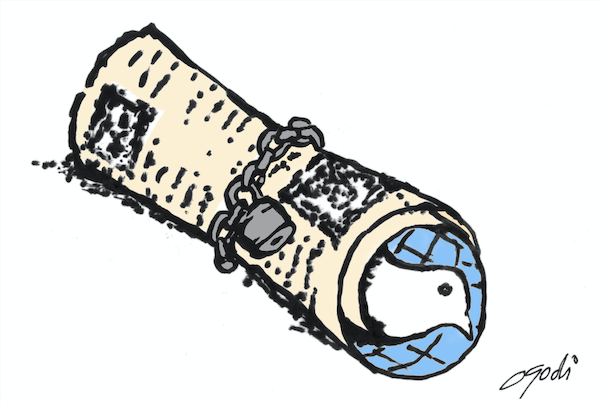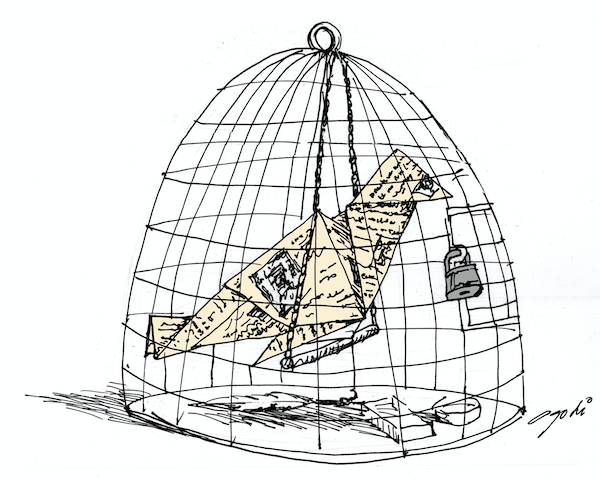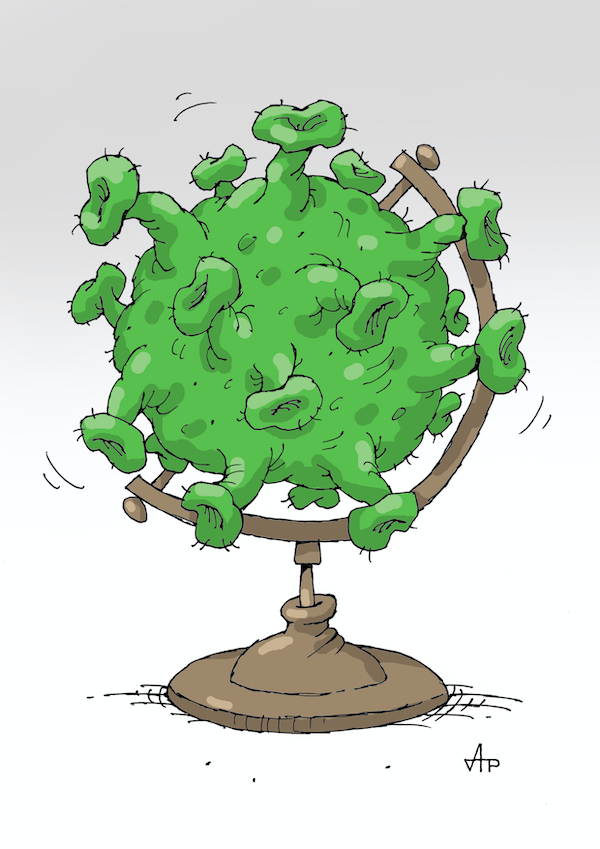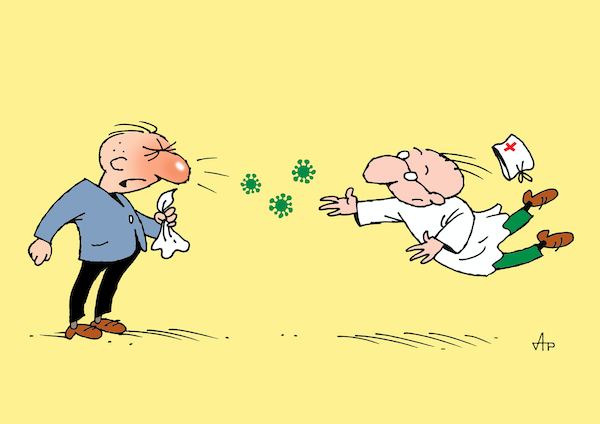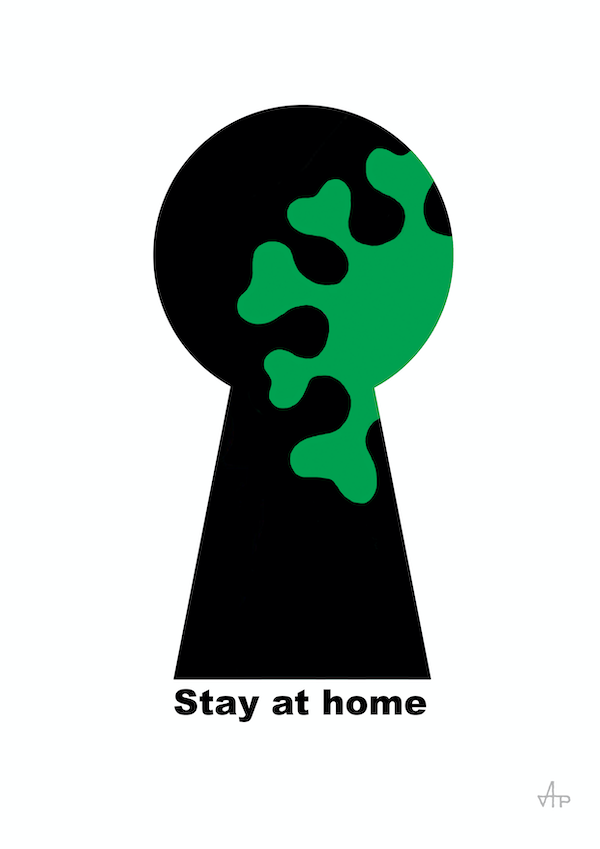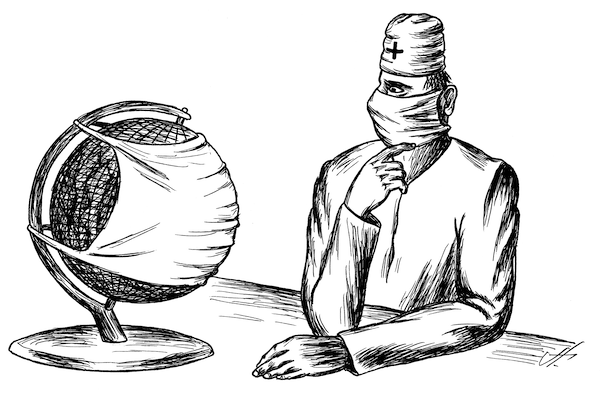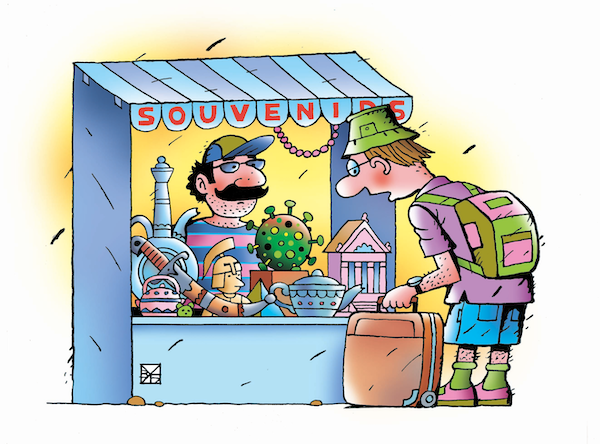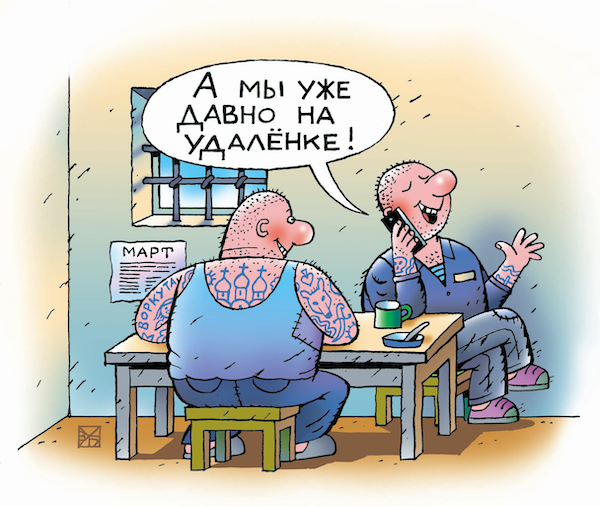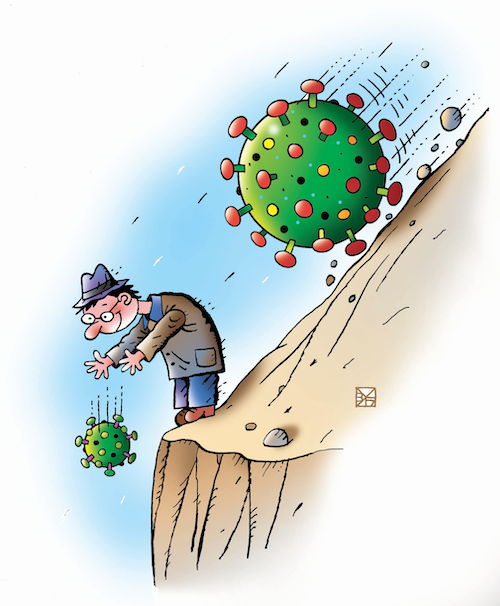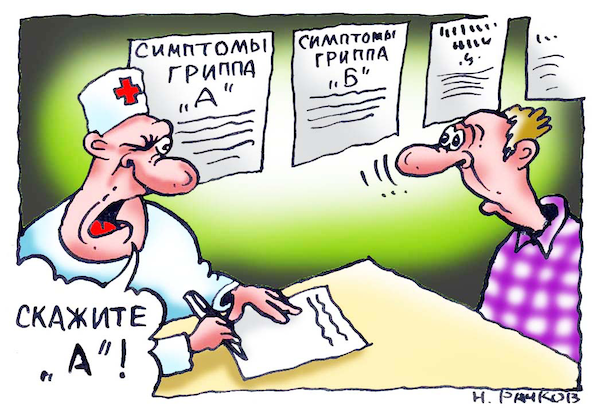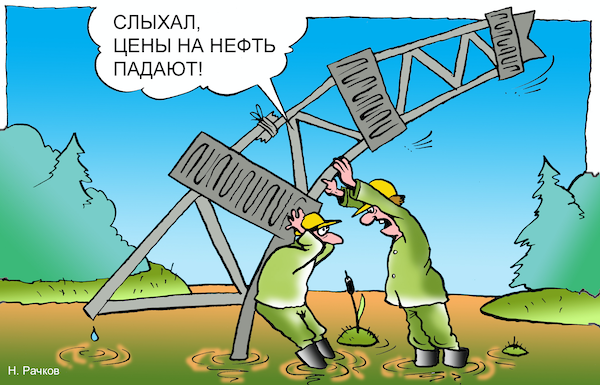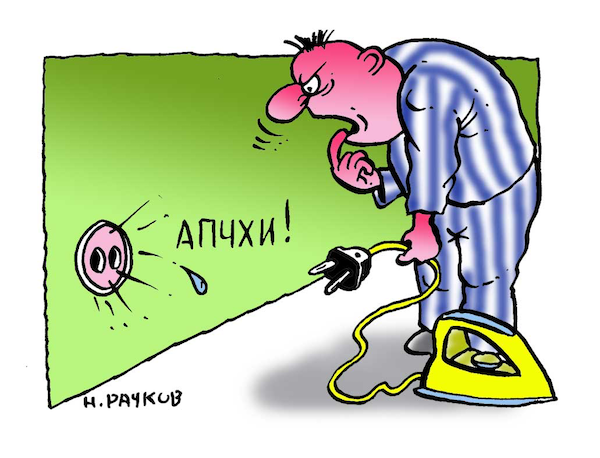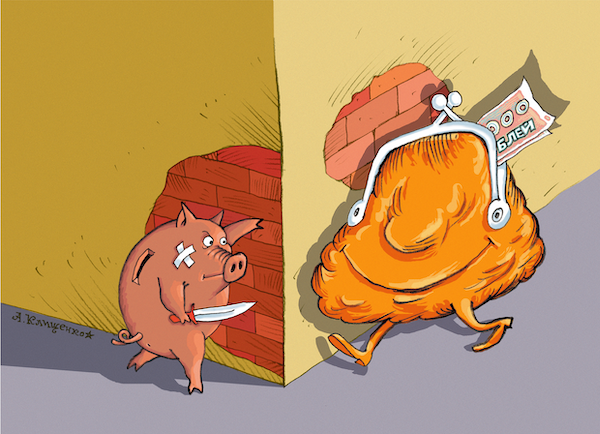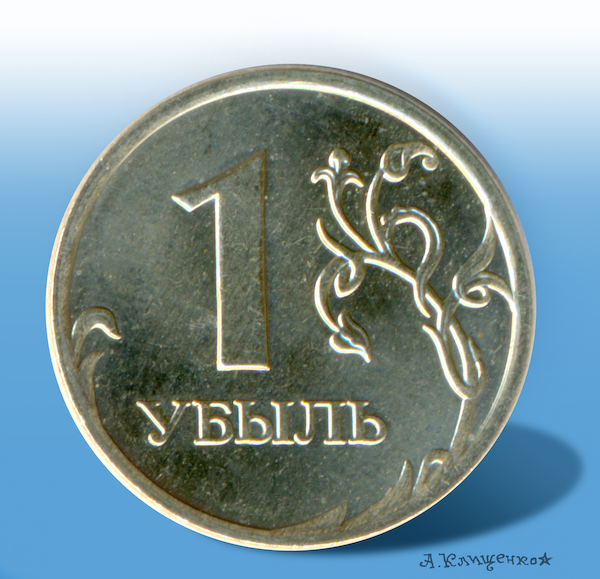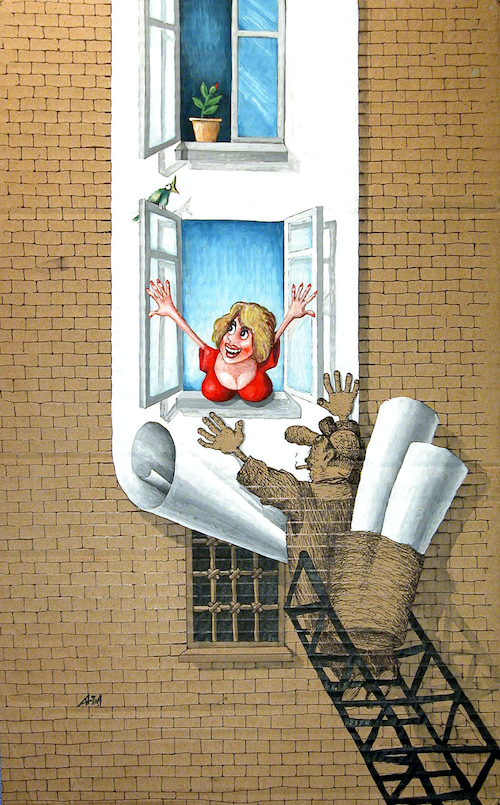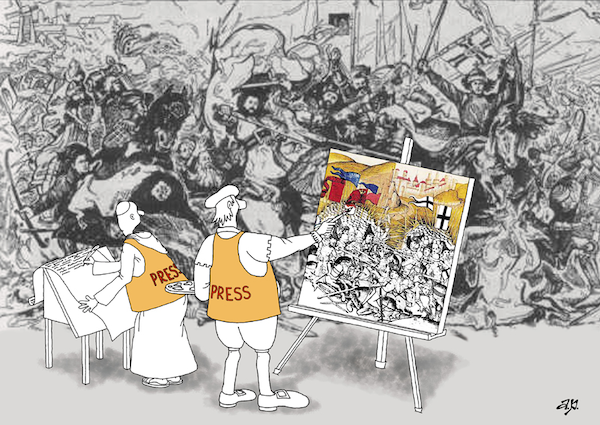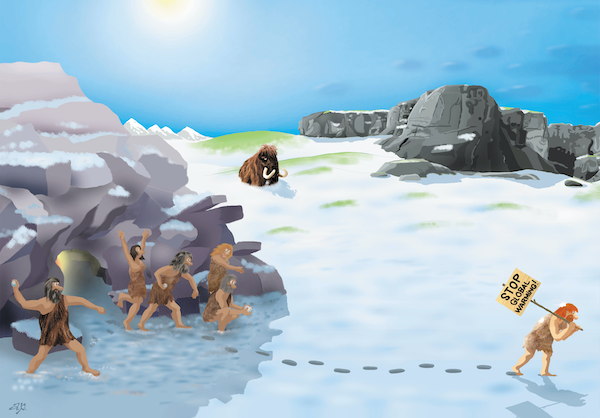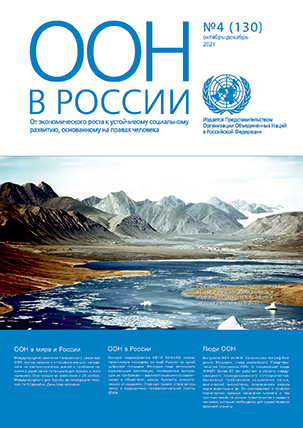Exhibition of Cartoons Dedicated to the UN 75th Anniversary and the World Press Freedom Day 2020

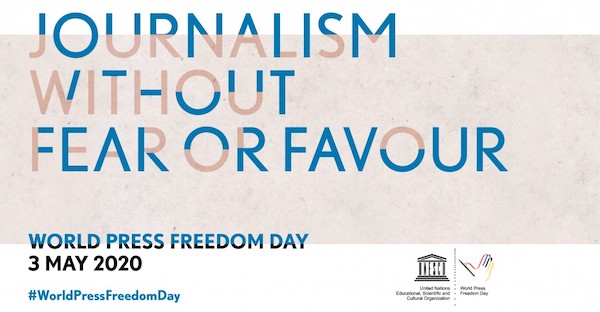
OPENING REMARKS BY VLADIMIR V. KUZNETSOV,
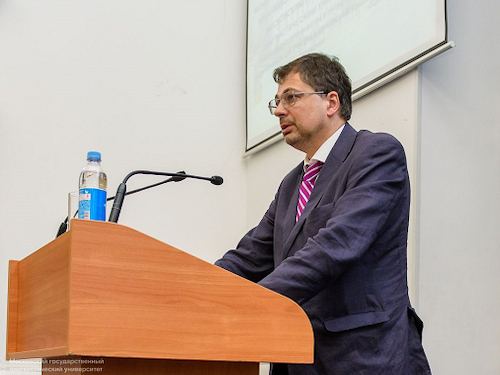
In line with its well-established tradition, the United Nations Information Centre in Moscow marks this World Press Freedom Day by unveiling a cartoon exhibit.
This is the 14th exhibit in a row and it comes with some peculiarities. First, it is dedicated to the 75th anniversary of the United Nations.Second, this vernissage is a virtual one since it is being held at a complex moment in time when people have to isolate themselves due to the ongoing pandemic. That said, self-isolation by no means implies disconnection. While we are losing some opportunities, we are seizing others. New technology enables us to stay as one, despite all odds. The virtual exhibit makes it possible for all those keen on visiting our website and social networks, both in Russia and abroad, to introduce themselves to some of the cartoonists’ works.
This year, the theme of the World Press Freedom Day is "Journalism without Fear or Favour".
Indeed, the key subject matter currently picked by journalists all over the world is the COVID-19 pandemic. The United Nations encourages joint efforts to promotestrictly verified information on COVID-19 and to combat all kinds of lies, insinuations and fake news that tend to disorient people. Today, all these can be fraught with the most tragic of consequences.
As we mark the World Press Freedom Day, we address the role of political caricature as a means of expression and as a tool for shaping public opinion. The United Nations has good reason to be keenly aware of this poignant genre since it is directly related to freedom of expression and media pluralism. The satirical if not sometimes sarcastic nature of political cartoons contributes to unfettered public debate, stimulates public reflection on varied challenges and discrepancies.
At the same time, the caricature whose language is universal and, as such, does not require translation, is good at uniting people, at building bridges between different cultures and social strata and at curbing intolerance and extremism.
The exhibits organized by UNIC Moscow sort of contribute to promoting deliberations on the current state of Russian caricature and on ways of utilizing the potential of this effective communication tool. One of the key aspects of this important discourse is the artist’s ethical responsibility, or the compatibility between sharp satire and unacceptable crudeness, that can sometimes be offensive and have truly negative repercussions.
For this UNIC, the World Press Freedom Day is a kind of professional fest since our daily work boils down to informing partners and the public at large about the UN’s work and, vice versa, to keeping the Organization abreast of the most significant developments in Russia. It is my pleasure to invite everyone to this vernissage, albeit virtual, of political cartoons.May this exhibit remind us all of a strong power of the drawn image which, yet again, can turn our attention to the ideals of peace, justice, unity and common good.
I would like to express my sincere gratitude to our partners and to all the artists who have kindly contributed to this project. Special thanks go to my marvelous UNIC Moscow colleagues Marina Shirshova and Irine Gadzhieva for their invaluable efforts in making this exhibit a reality.
Thank you and welcome!
OPENING REMARKS BY IGOR SMIRNOV
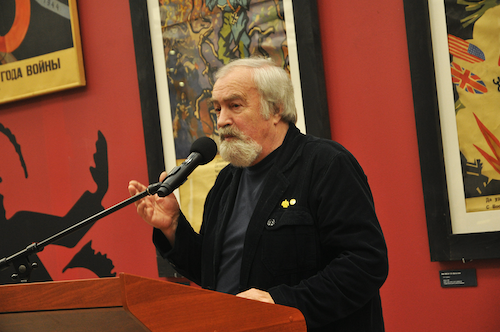
“If we want to recall an event that has long since faded into obscurity, all we have to do is to look at modern cartoons, and it will appear before us in all its glory.”
“The Illustrated History of Cartoon from Ancient Times to the Present Day” A. Shvyrov, 1903.
I have taken this quote from the epigraph to The Illustrated History of Cartoon from Ancient Times to the Present Day published in 1903, because these words are still relevant today.
For 14 years in a row, the United Nations Information Centre in Moscow has been organizing cartoon exhibits dedicated to the World Press Freedom Day. In addition to this exhibition, Moscow-based cartoonists have been holding their traditional April 1st vernissages since 1978. Back then, cartoons were in great demand in the media. There was not a single edition without a cartoon. There was necessarily a political cartoon or humorous drawing featured on the last page of every magazine or every newspaper. At first glance, it might have seemed tantamount to overall press freedom, yet it hardly reflected the reality. Political caricature in the Soviet Union was clearly intended as a weapon against capitalism. That said, cartoonists were forbidden to cover domestic political developments. Critical remarks vis-à-vis the country's top leadership were banned. Despite the fact that the famous Crocodile magazine and 15 similar magazines, each in every Soviet republic, were published during the Communist rule, they all toed Moscow’s line.
The only venue where we were able to demonstrate our works that had not been picked for placement in newspapers and magazines were exhibition halls at the Graphic Artists Trade Union Committee on 28, Malaya Gruzinskaya St.
International cartoon contests abroad presented us with yet another opportunity to introduce our works to the public. Our artists won a lot of accolades and awards. Cartoons created by the Russian artists thus made it to free media world outside their country of origin.
During the perestroika, the art of cartoons used to be in great demand. Cartoons were common on the front pages of newspapers and magazines and frequently appeared on TV screens. Yet as time went by, the art of caricature was increasingly looked upon as something to be afraid of.
Paper editors were no longer enthusiastic about seeing cartoons in their publications, citing their unwillingness to create problems for themselves and choosing to work instead with written text only. But what powerful tools cartoons really are: in fact, they can be cut out, enlarged or even used for the benefit of public policies. As a result, almost all media outlets have become largely cartoons-free.
So, when the UN Information Center decided to launch an annual cartoon exhibit in Moscow, it has indeed given local artists a breath of fresh air. We have come to realize that people still needed our art and that the freedom of expression was still there.
This year, as we mark the 75th anniversary of the United Nations, this exhibit reminds us of the importance of caricature in the modern world.
Since the exhibition is being held at a challenging moment when everybody is required to be on lockdown due to the devastating pandemic, a virtual vernissage has been put together by the organizers. But the prevailing circumstances cannot belittle the power and significance of cartoons.
Please enjoy the virtual exhibit and I hope our works will not leave you unimpressed.
(Any cartoon can be enlarged by clicking on it)
BY VICTOR BOGORAD
BY IGOR SMIRNOV
BY MIKHAIL ZLATKOVSKY
BY SERGEY TUNIN
BY VALENTIN DRUZHININ
BY SERGEY DERGACHEV
BY OMAR GODINEZ
BY ANATOLY RADIN
BY ARKADY GURSKY
BY VLADIMIR UBOREVICH-BOROVSKY
BY NIKOLAY RACHKOV
BY ALEXANDER KLISCHENKO
BY ALEXANDER ANUFRIEV
BY ROMAN PESHKOV
TRIBUTE TO MR. ANDREY RYZHOV
ARTIST AND CARTOONIST, CHAIRMAN OF THE RUSSIAN GUILD OF CARTOONISTS
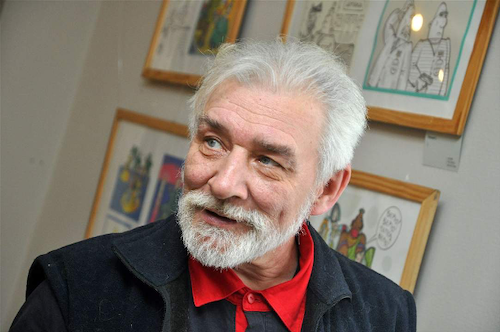
For many years, the United Nations Information Center in Moscow, jointly with the Russian Guild of Cartoonists, have been organizing annual cartoon exhibits to mark the World Press Freedom Day. Mr. Andrey I. Ryzhov, the Guild Chairman, was actively involved in organizing these events.
In 2020, for the first time ever, our exhibit will be held without Mr. Ryzhov’s engagement as, regrettably, he passed away on 30 January.
We would like to pay tribute to this remarkable gentlemen and talented artist, who will be remembered not only for his dynamism and vigour, but also for his subdued and modest way of life.
Andrey I. Ryzhov was born in Tokyo on 22 November 1951. He was educated as a civil engineer graduating from the Moscow State University of Civil Engineering and, as a student, began drawing cartoons for a wall newspaper. His first professional cartoon appeared in 1975 in Literaturnaya Gazeta (Literary Newspaper), a cultural and political weekly published in Russia and the Soviet Union. Mr. Ryzhov frequently worked in tandem with Sergei Stetskiy, creating cartoons under the pseudonym of Bin Brothers (Br. Bin). In 1976, Mr. Ryzhov joined a group of artists in setting up a first-ever cartoonists’ club in the Soviet Union under the auspices of Moskovsky Komsomolets, a popular youth daily.
Andrey Ryzhov received his first international awards in 1979, having contributed to international competitions in Bulgaria and Japan. Starting from 1977, he served in the Soviet Army, which unfortunately interrupted his creative activities for almost 20 years. In 1980, Mr. Ruzhov was nearly expelled from the Soviet Communist Party which laid blame on him “for cartooning, which resulted in tarnishing the reputation of the Soviet military officer". Only in 1998 was Lieut. Col. Andrei I. Ryzhov able to return to his favourite hobby, which has since become his main occupation.
This is what Temur Kozaev, Mr. Ryzhov’s colleague and friend, has to say about the late cartoonist:
“Through the long years dedicated to creating cartoons, Andrey proved to be an artist acutely aware of all the new developments and ideas within the art of ‘drawn’ humor and satire.”
“His unparalleled enthusiasm made him shout himself hoarse defending his notion of how the drawn ‘gags’ should be named. Andrey called this whole type of drawings ‘cartoon,’ believing that the term ‘caricature’ did not actually convey the real meaning of modern ironic graphic art.”
“Andrey’s works were widely on display at the traditional April 1exhibits in Moscow, other Russian cities and abroad. In December 2016, the Varshavka gallery mounted a cartoons exhibition featuring the drawings of Andrey Ryzhov and Anatoly Radin. There, the artists came up with their latest and most relevant works.”
“Andrey was the key initiator and compiler of a cartoons anthology titled "Russia Today". It is perhaps the only publication released over the last couple of decades that features the selected drawings of contemporary Russian cartoonists. This cartoon collection is a vivid snapshot of the evolving Russian ironic graphics since 2000.”
“Andrey put a lot of his time and energy into organizing a drawing contest and exhibit called "Gagarin's Smile". Those events were dedicated to the 50th anniversary of the first man's flight into space and were sponsored by the Russian Ministry of Culture and the Russian Cartoon Guild.”
“Andrey will be remembered for his contribution to a number of exhibits both in Russia and abroad. He also took an active part in putting together annual cartoon exhibits at the United Nations Information Centre in Moscow. We particularly recall his travelling to Germany together with two other participants with a view to holding a Russian art exhibition there.”
“Among the activities initiated by Andrey was the establishment of the Russian Guild of Cartoonists, of which he remained Chairman for a decade.”
The United Nation Information Centre valued the responsibility shouldered by Mr. Andrey I. Ryzhov while selecting his and his colleagues’ works for our annual events. In his opening remarks as Head of the Guild of Cartoonists of Russia, he repeatedly stressed that one could not cross the fine line between the freedom of speech and overindulgence. According to him, in cartoons everyone had his own taboos and self-censoring.
In January 2015, in his capacity as head of the Guild of Cartoonists of Russia, Mr. Ryzhov pointed out that his organization would not heed a call from the FECO, European Federation of Cartoonist Organization, to reproduce the works of Charlie Hebdo, a French satirical magazine. He stressed that Russian cartoonists showed more wisdom and restraint when it came to religion. In fact, they never disregarded the mindset of people with different religious beliefs. “Any faith-related undertaking has to be weighed up thoroughly,” Mr. Ryzhov said.
It is really symbolic that Mr. Andrey Ryzhov, himself chairman of the Guild of Russian Cartoonists, came up with the idea of an international cartoon contest dubbed as "GLOBAL ISSUES" – 2015. The contest was dedicated to the UN’s 70th anniversary and, as such, won active support on the part of the UN Information Centre in Moscow and the Office of the High Commissioner for Human Rights (UNHCR) in Russia.
In 2016, Mr. Ryzhov took the lead in unveiling an exhibit titled “Cartoons Against Terrorism”, which was organized at MGIMO University. That was the 10th anniversary exhibit of political caricature under the aegis of the UN Information Centre in Moscow.
From left to right: Andrey Ryzhov; Natalia Chernysheva, Deputy Dean of the School of International Journalism at MGIMO University; Yaroslav Skvortsov, Dean of the School of International Journalism at MGIMO University; Vladimir Kuznetsov, Director of the United Nations Information Centre in Moscow.
We are confident that Andrey Ryzhov’s friends and colleagues will sure have many more warm words to say in his honour. And they will certainly do so when they all come together at our next exhibit.
Blessed Memory!

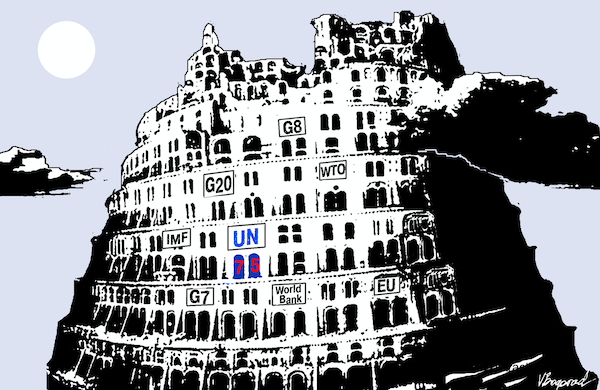
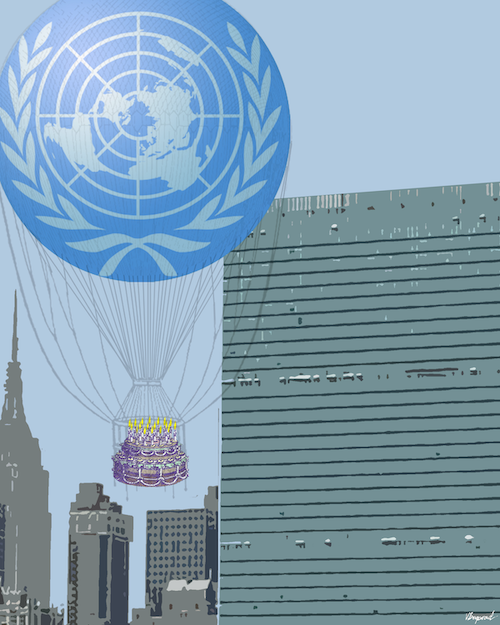
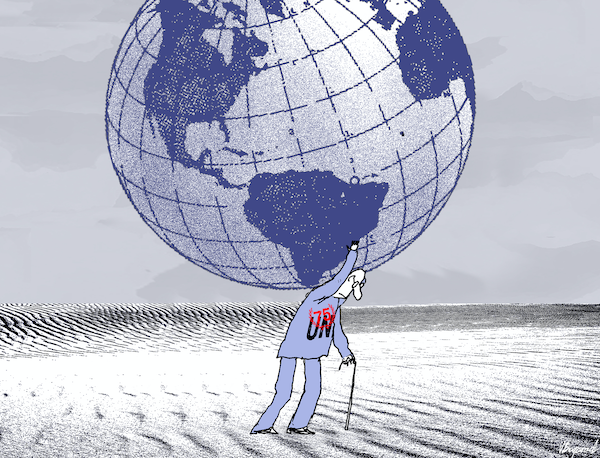
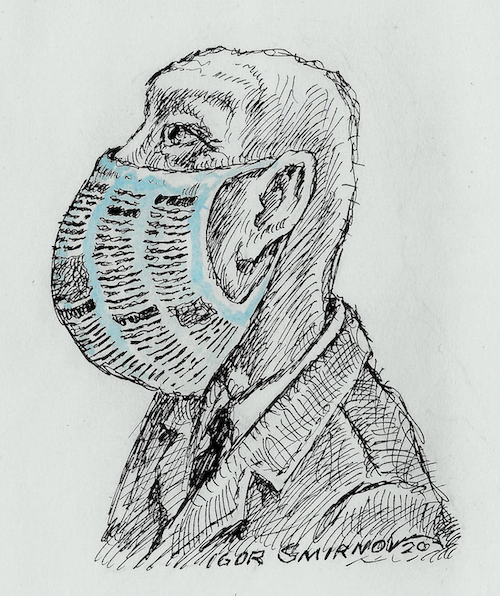
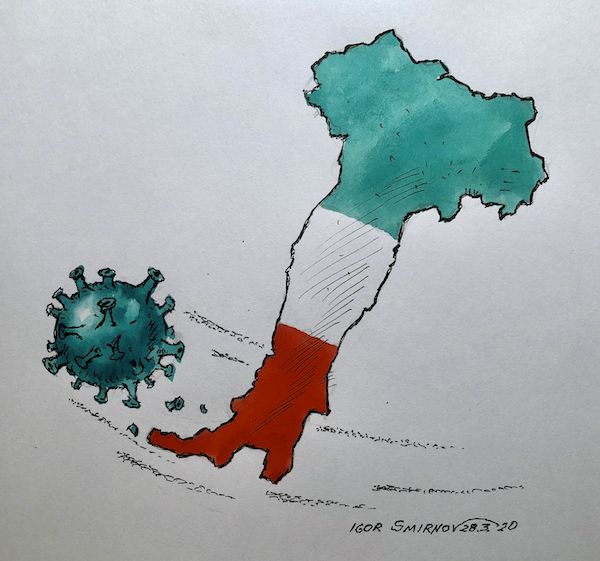
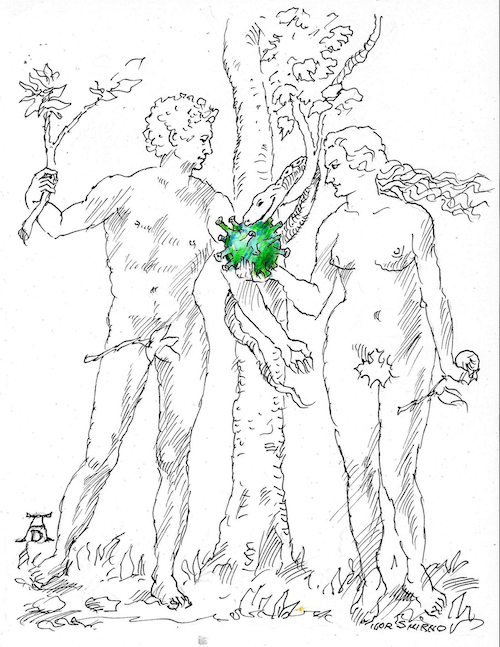
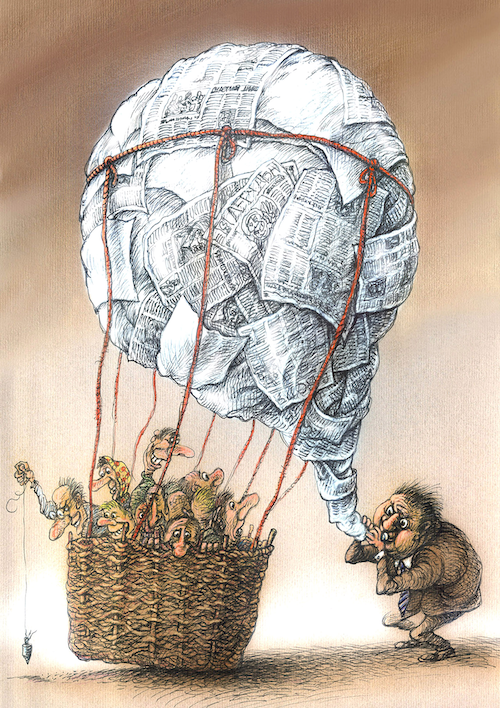
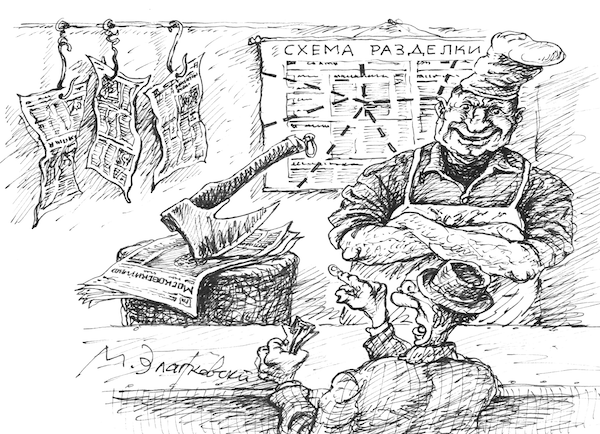
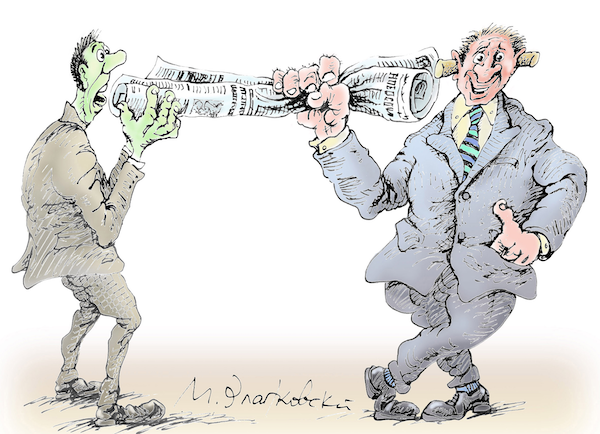
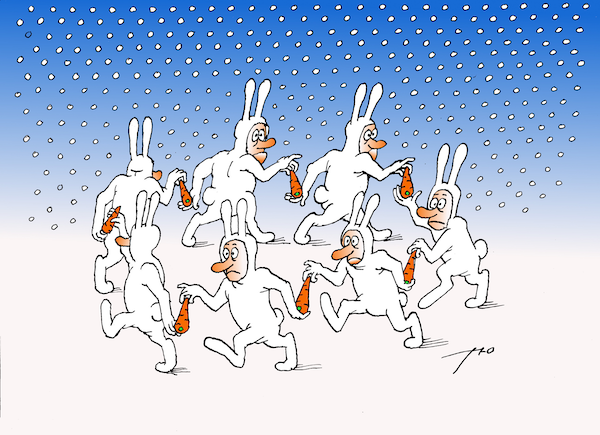
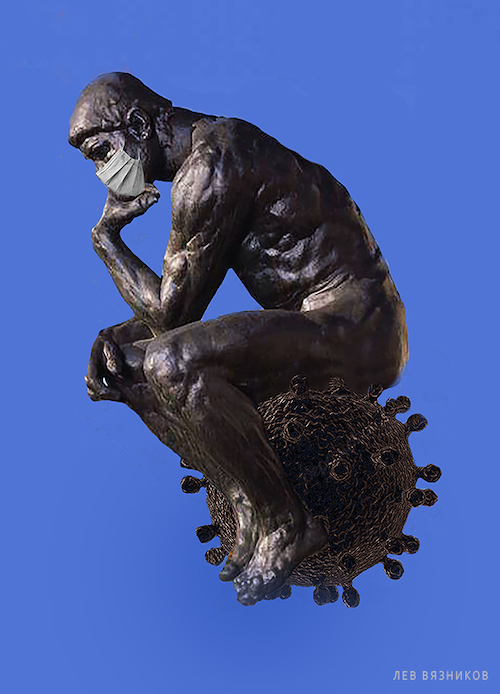
.png)
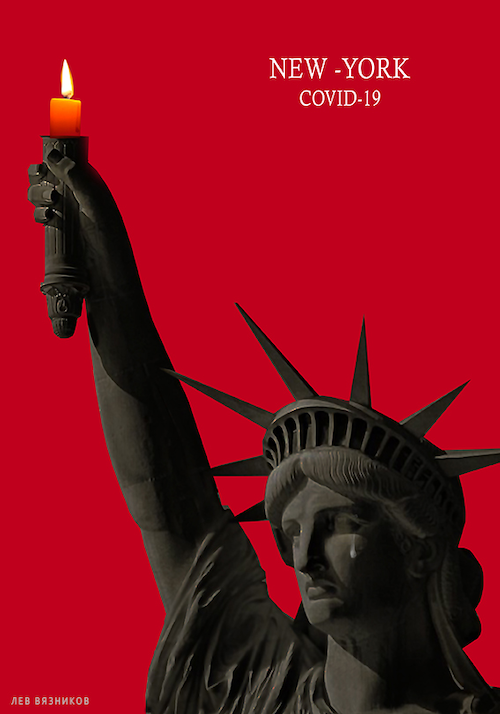
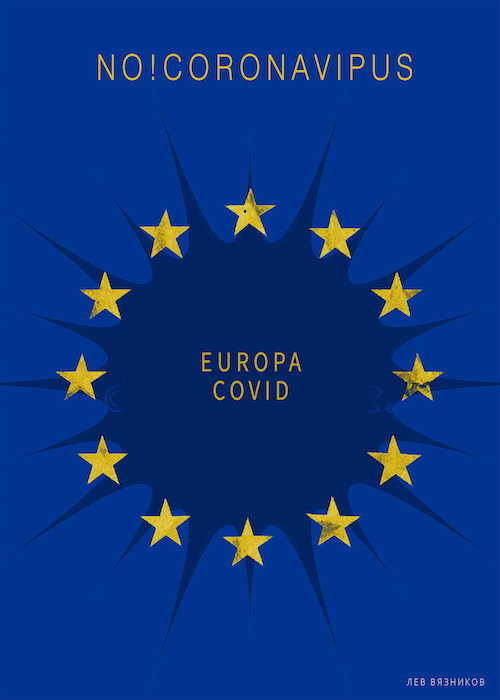
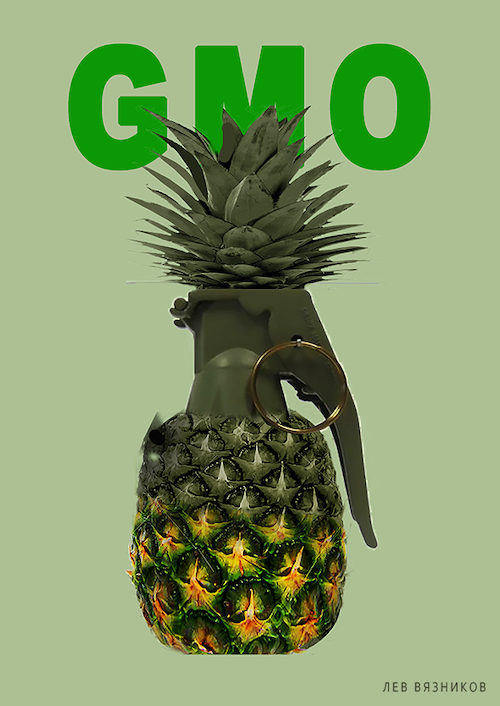
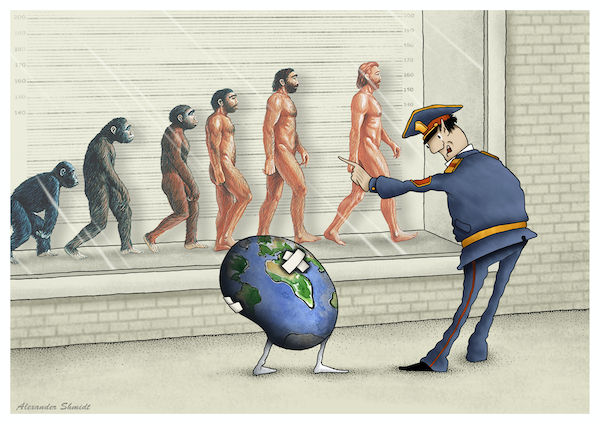
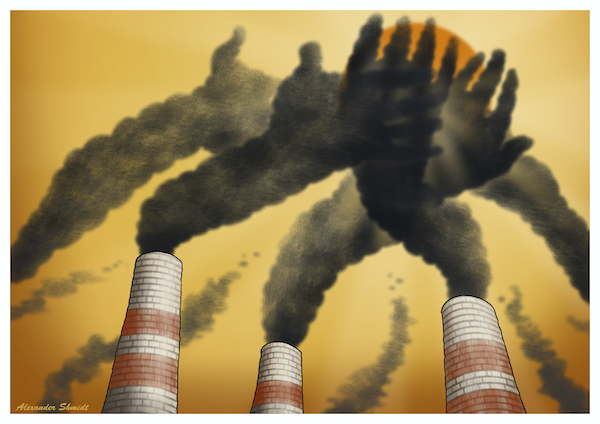
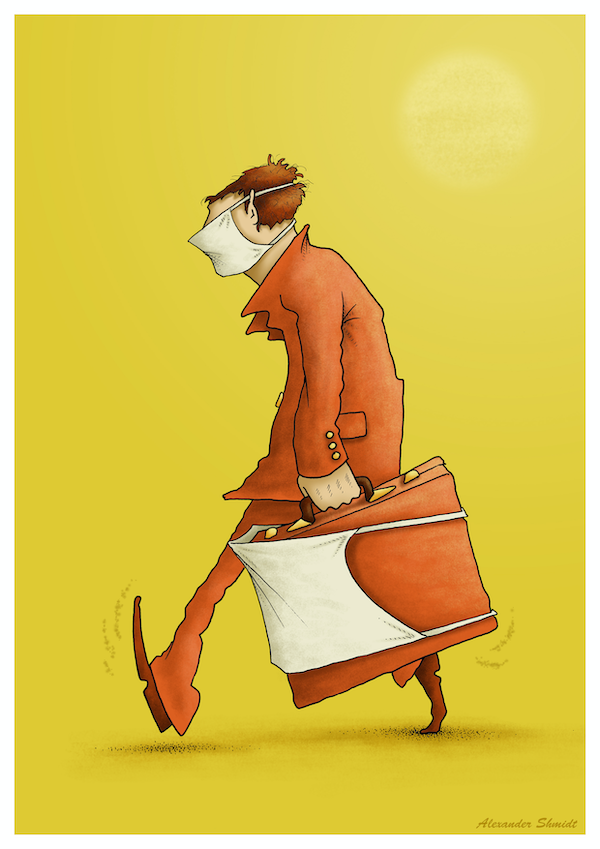
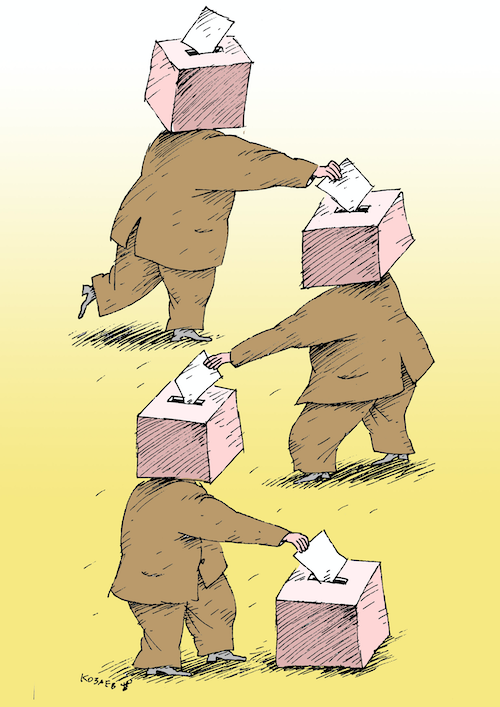
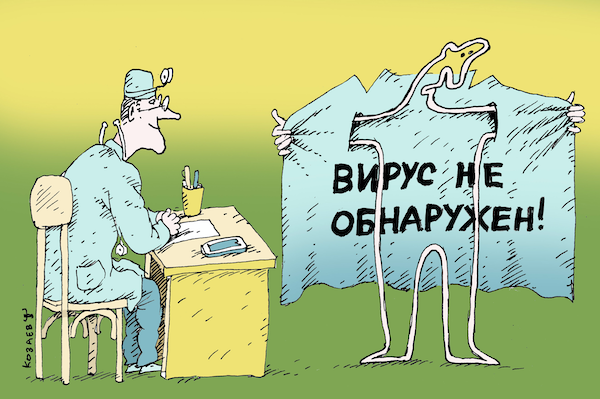
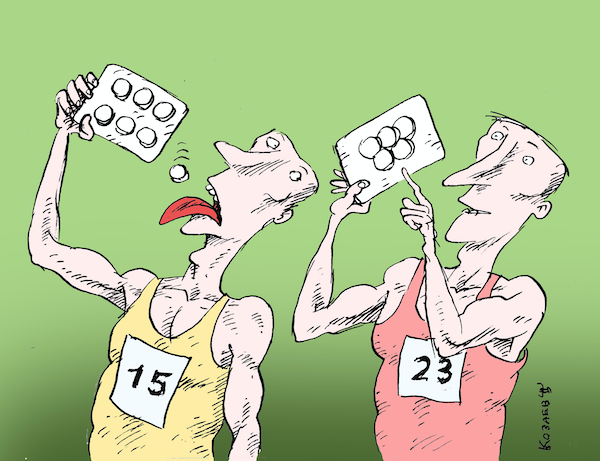
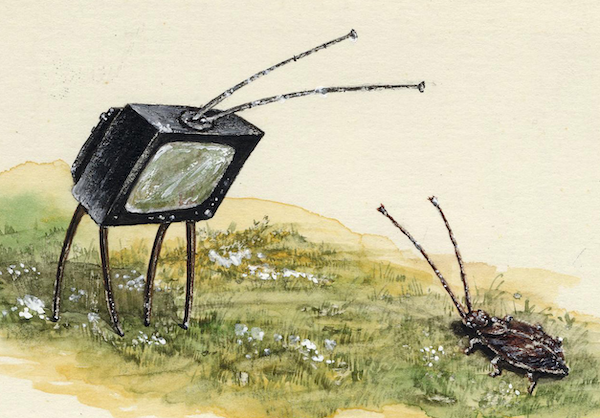
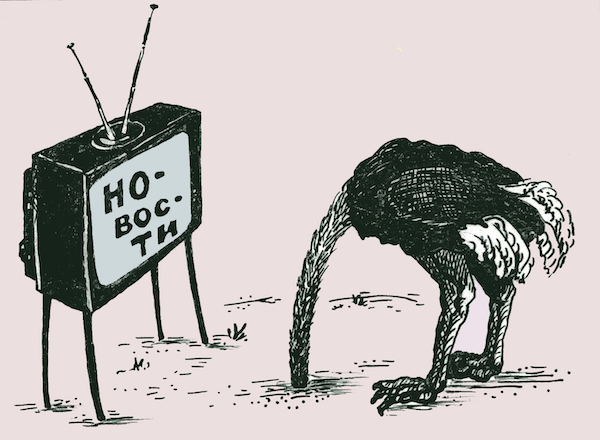
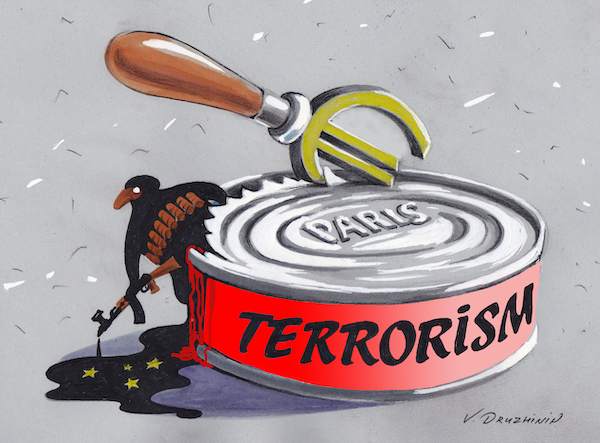

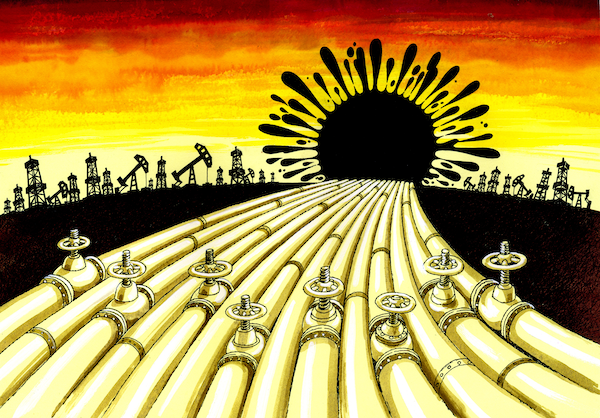

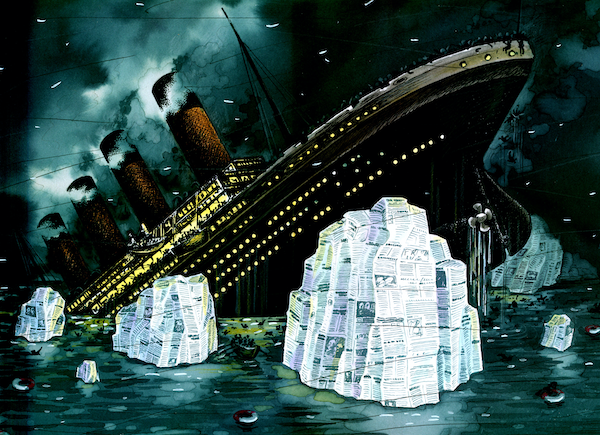
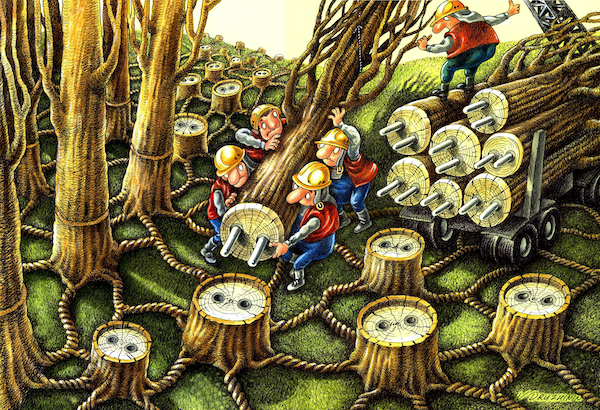
.jpg)


